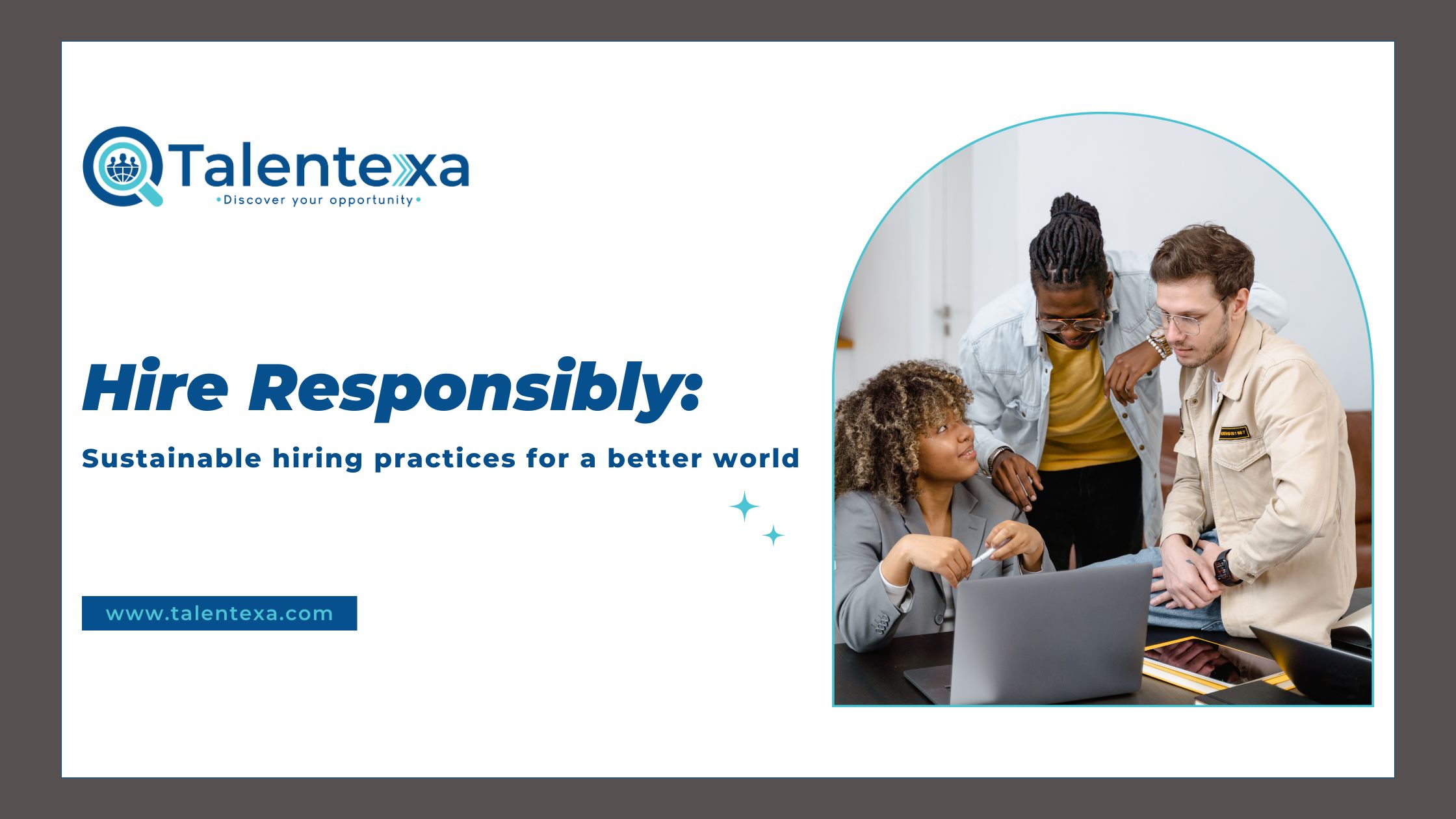In today’s business landscape, sustainability is no longer just a buzzword, it’s a necessity. While many organizations focus on sustainable products, operations, and supply chains, sustainable hiring practices are often overlooked. These practices not only help organizations reduce their environmental footprint but also create a more engaged, diverse, and forward-thinking workforce. This article explores the concept of sustainable hiring, its importance, and actionable steps organizations can take to embed sustainability into their recruitment processes.
What is Sustainable Hiring?
Sustainable hiring goes beyond filling roles. It’s about adopting practices that minimize environmental impact, promote social equity, and ensure the long-term health of the organization and society. This involves everything from reducing paper usage during the hiring process to ensuring diversity, equity, and inclusion (DEI) are at the forefront of recruitment strategies.
Key elements of Sustainable Hiring practices
1. Digital transformation of recruitment processes:
- Moving away from paper-based processes to digital platforms for job postings, applications, and interviews reduces paper waste and energy consumption.
- Using AI-driven tools to screen resumes and conduct virtual interviews not only speeds up the hiring process but also reduces the need for physical travel, thereby cutting carbon emissions.
2. Promoting remote work opportunities:
- Remote and hybrid work models significantly reduce the environmental impact by minimizing commuting, office energy consumption, and other related carbon footprints.
- Offering flexible work arrangements also broadens the talent pool, enabling companies to tap into a diverse, global workforce.
3. Diversity, Equity, and Inclusion (DEI):
- A sustainable hiring strategy prioritizes DEI, ensuring that recruitment is fair, unbiased, and inclusive. This not only supports social sustainability but also fosters innovation and varied perspectives within the team.
- Establishing unbiased hiring practices, such as blind recruitment and diverse interview panels, helps reduce discrimination and promotes equality.
4. Energy-Efficient hiring events:
- Virtual job fairs and online onboarding sessions can replace traditional in-person events, cutting down on travel emissions and the use of physical materials.
- Companies can also invest in green technologies for recruitment offices, such as energy-efficient lighting, renewable energy sources, and sustainable office supplies.
5. Engaging in ethical employer branding:
- Organizations should highlight their commitment to sustainability in their employer branding to attract like-minded talent who are passionate about environmental and social causes.
- Showcase success stories of sustainability initiatives within the company, emphasizing the role of employees in driving these efforts.
6. Leveraging data to improve sustainability:
- Using data analytics to track and measure the sustainability of hiring processes allows companies to make informed decisions and continually improve their strategies.
- Metrics like carbon footprint per hire, diversity ratios, and the environmental impact of hiring activities can help companies refine their approach.
The benefits of Sustainable Hiring
- Enhanced employer reputation: Companies known for sustainable practices attract top talent, particularly from younger generations who prioritize working for socially responsible employers.
- Cost savings: Digital recruitment processes and remote work reduce costs associated with physical office spaces, printed materials, and travel expenses.
- Increased employee engagement and retention: Employees are more likely to stay with companies that align with their values, including sustainability and social responsibility.
Steps to implement Sustainable Hiring practices
- Conduct an audit of current hiring processes: Evaluate your current recruitment methods to identify areas where you can reduce waste, improve efficiency, and promote inclusivity.
- Invest in green technologies: Implement digital tools and platforms that reduce environmental impact and streamline recruitment.
- Set clear sustainability goals: Define what sustainability means for your hiring process and set measurable goals to achieve them.
- Educate and train your HR team: Equip your HR team with the knowledge and tools to implement sustainable practices, from reducing biases to promoting virtual recruitment.
Conclusion:
Sustainability in hiring practices is more than a trend. As companies look to the future, incorporating sustainable practices into recruitment not only supports environmental and social goals but also strengthens the organization’s ability to attract, engage, and retain top talent. By rethinking and redesigning hiring processes with sustainability in mind, companies can lead the way toward a more responsible and sustainable future.
“Are you looking to find the right talent for your organization or looking for your next career opportunity, we are here for you.”
Hire Talent: https://talentexa.com/hire-candidates/
Apply for Job: https://talentexa.com/job-seeker-apply/
OR
Connect with us directly:
Email: info@talentexa.com
Website: www.talentexa.com


